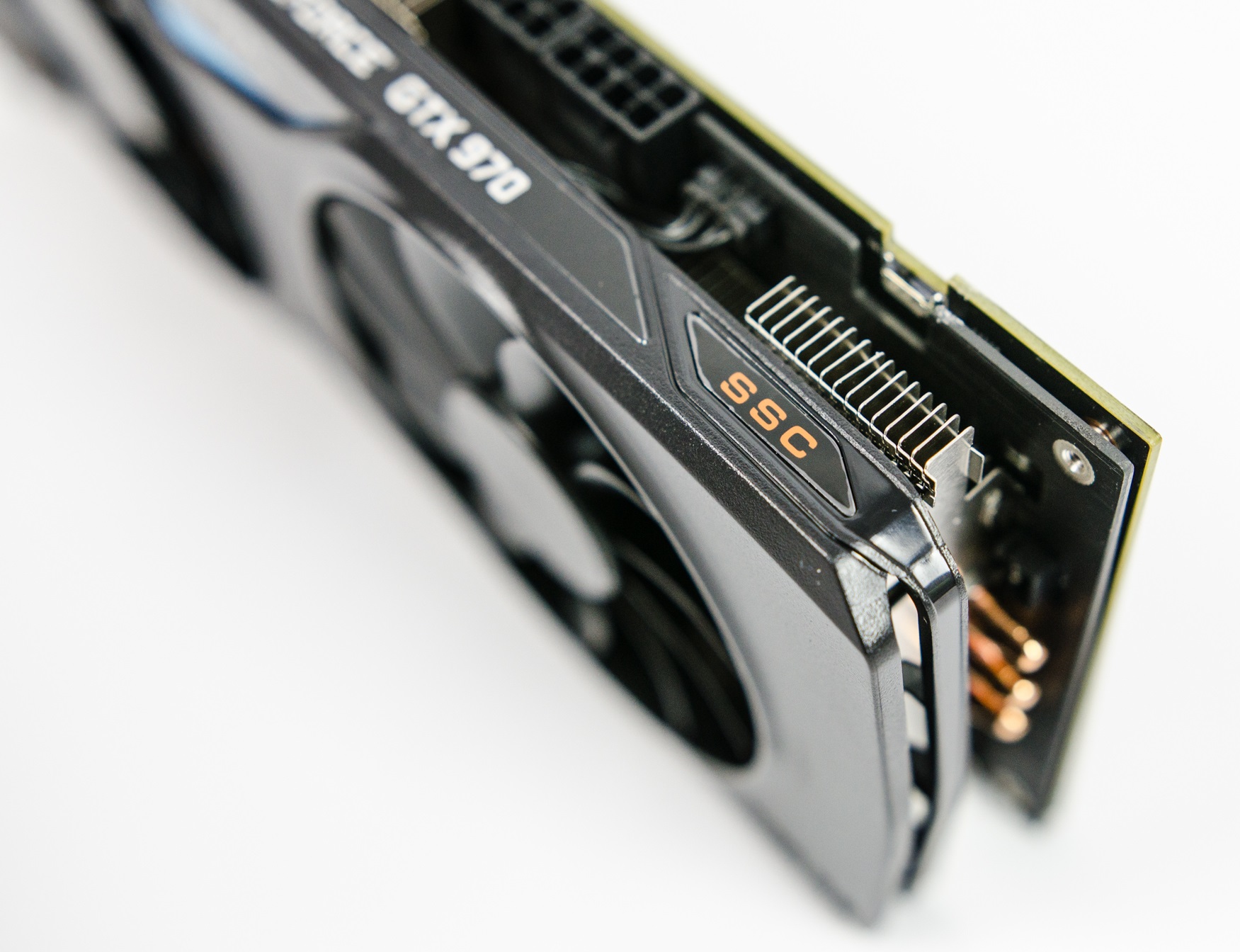Conclusion
Performance
Overall the EVGA 970 SSC is a beast for how much it costs. At $349, around $200 below Nvidia’s GTX 980, the EVGA GTX 970 SSC ACX2.0+ is a force to be reckoned with. It’s quiet, cool, and still has some overclocking room left. If you’re gaming at 1080p this is the perfect card for you. It’ll play every game maxed out at at least 30FPS, if not 60+FPS for most games. While we turned up the MSAA to 8X for the sake of benchmarks, it really does not make much of a visual difference, especially at 3840 x 2160 so feel free to turn it down or even off. See the chart below for the final summary by game.
The performance numbers weren’t quite at the playable level for 3840×2160, but no single GPU card can play all those games at the UHD resolution with perfectly playable FPS anyways.
Design & Features
The GTX 970 SSC manages to be a complete silent and sleek solution simultaneously. It’s not overly flashy or colorful, it is what it is. While the default fan controller profile wasn’t our favorite, the silence of the ACX2.0+ cooler, even with a custom profile, was truly impressive.
The Elephant in the Room
A couple months ago rumors started swirling around that the GTX 970 was not able to properly utilize all 4GB of VRAM like Nvidia published. Through a series of reports, tests, and finally a confirmation from Nvidia it was outed that the GTX 970 indeed first accesses 3.5GB, while the remaining 500MB is accessed much more slower and is not prioritized.
Nvidia’s Press Release on the Matter:
“The GeForce GTX 970 is equipped with 4GB of dedicated graphics memory. However the 970 has a different configuration of SMs than the 980, and fewer crossbar resources to the memory system. To optimally manage memory traffic in this configuration, we segment graphics memory into a 3.5GB section and a 0.5GB section. The GPU has higher priority access to the 3.5GB section. When a game needs less than 3.5GB of video memory per draw command then it will only access the first partition, and 3rd party applications that measure memory usage will report 3.5GB of memory in use on GTX 970, but may report more for GTX 980 if there is more memory used by other commands. When a game requires more than 3.5GB of memory then we use both segments.
We understand there have been some questions about how the GTX 970 will perform when it accesses the 0.5GB memory segment. The best way to test that is to look at game performance. Compare a GTX 980 to a 970 on a game that uses less than 3.5GB. Then turn up the settings so the game needs more than 3.5GB and compare 980 and 970 performance again.
On GTX 980, Shadows of Mordor drops about 24% on GTX 980 and 25% on GTX 970, a 1% difference. On Battlefield 4, the drop is 47% on GTX 980 and 50% on GTX 970, a 3% difference. On CoD: AW, the drop is 41% on GTX 980 and 44% on GTX 970, a 3% difference. As you can see, there is very little change in the performance of the GTX 970 relative to GTX 980 on these games when it is using the 0.5GB segment.”
Now, how does this truly effect the end user?
The short answer is, for most of you out there, it won’t. Not one bit. For every benchmark and game that we tested today, we measured VRAM usage and the results may surprise you.
First at 1080p:

1080p is still the most common resolution used by gamers today. While 4k is awesome, it still isn’t very common due to how expensive it still is. These are some of the most intensive games available on the market, all completely maxed out. MSAA sucks a lot of unnecessary VRAM and even then we’re still only using 2.5GB at the highest. If you turn MSAA off you’re going to be under 2GB all of the time.
Now, with 4K resolution:

Here you do start to approach that 3.5GB line, but again, these are the highest quality games on the market, with MSAA at a ridiculously unnecessary level, on a 4k display. Also bear in mind that games sometimes load far more than they need. Even once you hit a VRAM limit your performance may not actually be throttle. Once our 5k display arrives in the office we’ll be happy to check VRAM usage levels and see if we’re missing out on anything from the last missing 500MB but as of right now we can conclude that returning your GTX 970 would be a waste of your time. Yes, Nvidia messed up and could have handled the situation better. But as it stands 3.5GB is still more than the average user needs. If you’re using a 4k display and have enough hardware to push it, you’re probably someone who sprung for a GTX 980 or Titan X to begin with.
We’d like to thank EVGA for sending us the GeForce GTX 970 SSC ACX 2.0+. They managed to take the already awesome reference design GTX 970 to the next level for a very small premium.












[…] […]
Comments are closed.